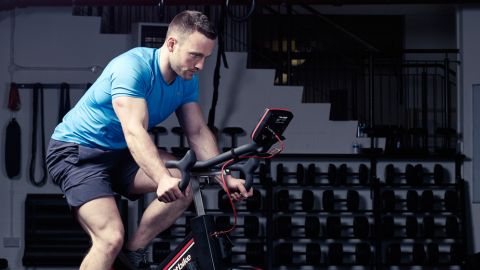Lying down while exercising. This is likely your first impression of a person on a recumbent bike at a Soul Cycle gym, an impression that probably became your motivation to take it up, too. In that case, welcome to the club of recumbent bike fans!
As you go along, you will realize that, indeed, you made the right decision. After all, these reasons for exercising on a recumbent bike are true.
Physical Benefits Due to Its Design
Unlike an upright bike, a recumbent bike allows its user to lie down in a near-horizontal position with feet still on the pedals. This unique design means that you will have full back support, particularly for your hips, a part of the body that many people have issues with, too. With an upright bike, your back has little to no support so there’s a possibility of slouching while biking.
With full back support comes better comfort even when you’re exercising for an hour or so. Your neck and shoulders aren’t likely to become tense and tired halfway through the workout. Your upper and lower back will also be more comfortable, a great feature when you’re having chronic pain issues in these areas.
The recumbent bike’s design also places less stress on the joints, particularly the knees and hips. You’re not pushing down on the pedals but you’re stretching your leg muscles when pedalling.
There’s also the matter of the larger seat in a recumbent bike. You’re less likely to suffer from saddle soreness, a common issue with the smaller seats in upright bikes.
Of course, it’s possible to exercise even during inclement weather when you have a recumbent bike at the gym. This isn’t possible with regular bikes and, thus, it’s one of its limitations.
Muscle Workout
Don’t think that just because you’re reclining on a recumbent bike means that you’re not getting a full throttle workout! The pedalling motions work out your body’s muscles particularly the:
- Rectus femoris, a quadriceps muscle responsible for hip flexing as well as in extending and raising the knee and thigh.
- Vastus medialis, also a quadriceps muscle that aids in stabilizing the kneecap as well as in extending the legs at the knees
- Vastus lateralis, a muscle at the side of the upper thigh that extends the lower leg and aids in pushing the legs from a squatting position
- Tibialis anterior, a muscle on your shin that aids in flexing the foot forward
- Semitendinosus, a hamstring muscle crucial in extending the hip and flexing the knee
- Medial gastrocnemius, a calf muscle vital in flexing the leg at the knees and in flexing the foot
- Biceps femoris, the muscle that performs hip extension, rotation and knee flexion
- Gluteus maximus, the largest muscle that allows movement in the thigh and hips
Changing the incline and resistance on a recumbent bike transforms an otherwise moderate exercise program into an intense one. An hour or so on a recumbent bike with a high-intensity interval training program will pump more blood into your body, strengthen the lower body and relieve stress, among other health benefits.
